Northern California is a stunning area of the country. If you own a home here or have a community garden, planting hardy flowers that can thrive in this region can add a splash of color to the landscape.
Thankfully, this area of the Golden State sees plenty of sunshine. So much so that finding flowers that can withstand a climate without a lot of rain is important. Below you will find a mix of perennials and annuals that thrive in Northern California.
1. Anise Hyssop
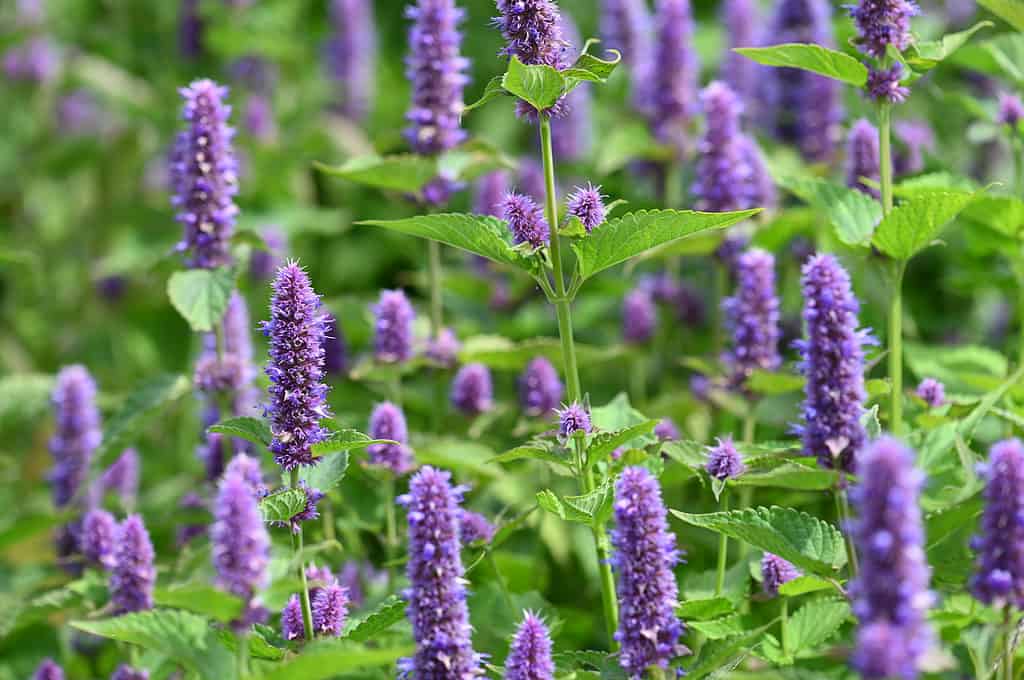
This flower is part of the mint family.
©iStock.com/BethAmber
Anise hyssop is an aromatic herbaceous perennial with scented blooms and foliage that grows easily. It’s a great plant for a garden that supports pollinators because of its pastel lavender blossoms, which draw a variety of beneficial creatures like hummingbirds, butterflies, and bees.
Hardy anise hyssop blooms have a lengthy blooming season, so you are able to appreciate them throughout summer and autumn. These flowers love to be in full sun, but they can still grow in slight shade.
This plant can withstand droughts once it is established, although it requires well-drained soil.
Because plants disperse by seeds and rhizomes, allow ample room for them to grow and split bigger clusters as needed to prevent encroachment into other portions of your garden.
2. Bear’s Breeches
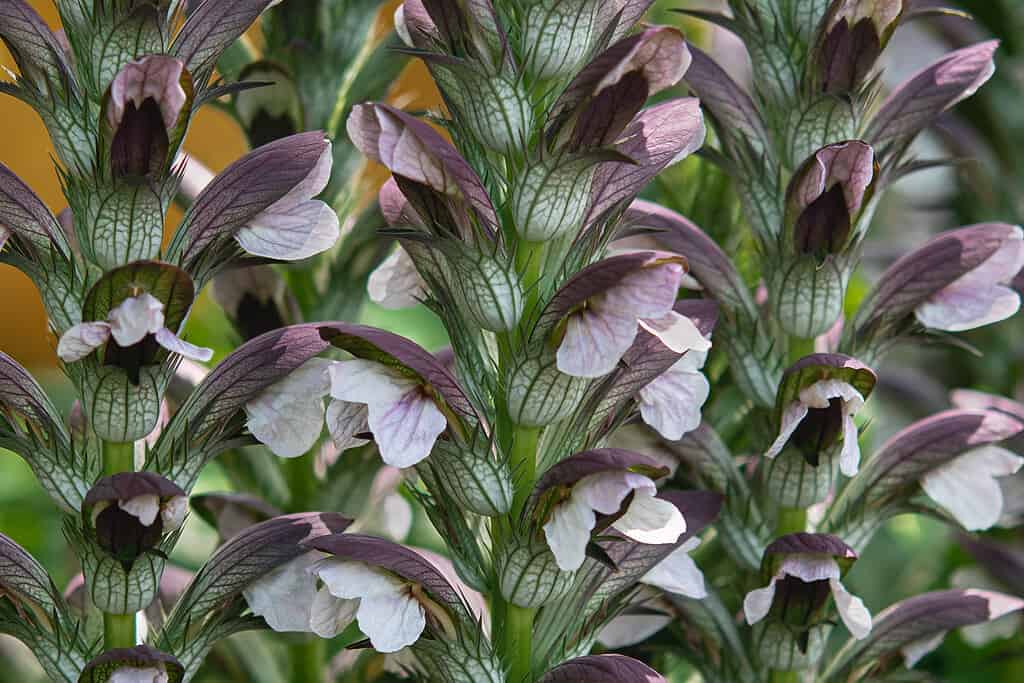
Penn State Arboretum has bear’s breeches flowers.
©JamesVGough/iStock via Getty Images
Tall and audacious, bear’s breeches is a stunning perennial. Thick, deep green palmate foliage that is large and robust grows in a tight bunch. Thick stems of flowers appear, completely covered in voluminous, hooded, mauve, and white blooms.
On the flower heads, there are sharp, prickly bracts that should be avoided as they can cause discomfort if handled roughly. Long-lasting flowers and, in regions with higher temperatures, sometimes evergreen foliage are present.
When choosing where to place bear’s breeches, exercise caution as their strong root shoots can cause them to grow fairly rapidly. Planting it in a pot is one method of controlling its spread.
3. Bird of Paradise

Birds of paradise won’t bloom if the temperature isn’t warm enough.
©SaskiaAcht/Shutterstock.com
The bird of paradise is another wonderful flower to plant in Northern California. It is distinguished by its enormous, vivid orange bloom. These blossoms are very unusual and vibrant, appearing to pop out of a plain green stem.
This plant has large, palm-like leaves. A dramatic statement like the bird of paradise will look great in any landscaping with a tropical motif. If you are unable to cultivate a Bird of Paradise plant outside, you are able to grow it indoors as a vibrant houseplant.
During the warmer months, you can put it outside and nurture it in a window with sunlight if the weather gets too chilly. Because of its long-lasting blossoms and evergreen leaves, the bird of paradise plant can enchant you with its stunning appearance.
4. Blue Passionflower
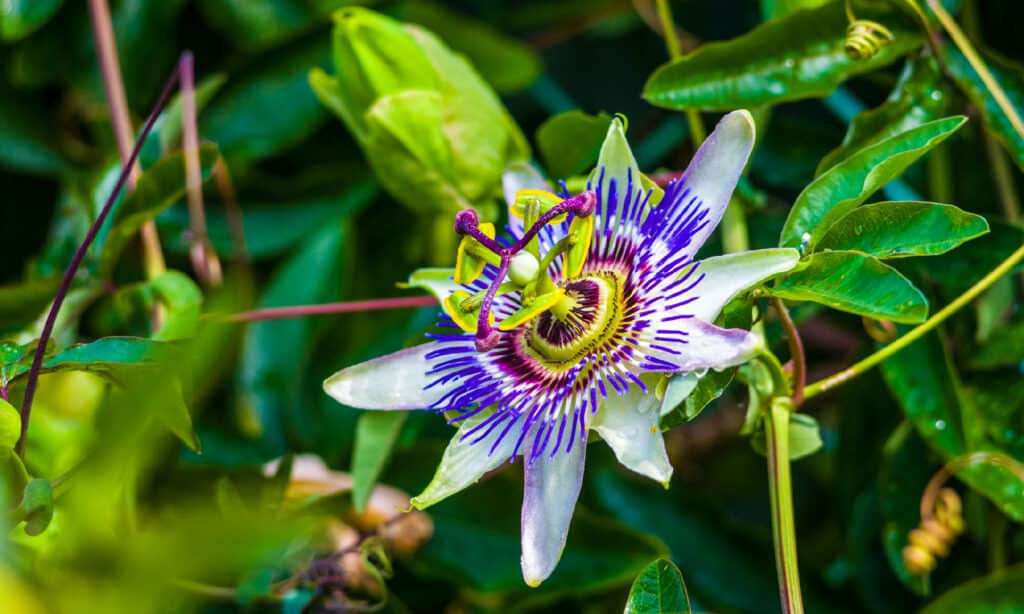
There are few flowers that look as unique as Blue Passionflowers.
©iStock.com/Shedu
Coming in at number four on our list is the blue passionflower. Now, this is one of the coolest-looking flowers you can grow in Northern California! Large blossoms of the blue passionflower appear in the height of summer.
The vibrant, gaudy flowers come in a variety of hues, such as white, violet, green, and deep red. The resilient blue passionflower prefers loose, well-drained soil. Choose a spot for it that receives full sun or some shade.
Given that the passionflower grows quickly, you can either provide it with a trellis, fence, or pergola to climb on. You could also allow it to spread out naturally as a type of ground cover. Butterflies are drawn to flowers because of their lovely scent.
Since passionflower serves as the host flower for numerous magnificent butterfly species, it is an excellent addition to any butterfly garden.
5. Delphinium
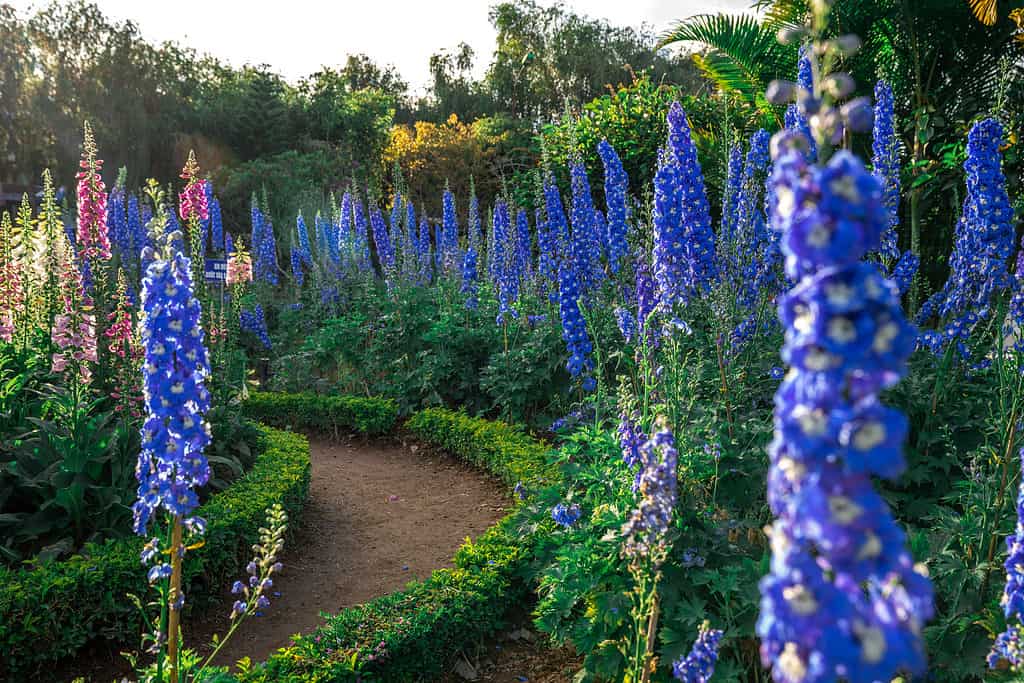
You can use
Delphiniumflowers to create a gorgeous border along a walkway.
©Chanon Vathanopas/Shutterstock.com
If you’re looking for a tall flower to grow in Northern California, consider the Delphinium. This beautiful bloom can grow to six feet tall! Delphinium is an extremely decorative perennial. It is also a simple annual plant to cultivate from seed.
Massive, vibrant flowers, usually violet in color, blossom in the middle of summer. Pollinators are drawn to these flowers. On the other hand, the flower stalks are large and hefty. It can be beneficial to stalk these flowers to prevent them from hanging down due to their weight.
Plant delphinium in bright sunlight and well-drained. It grows best in cooler areas and needs a little shade during the day when cultivated in warmer climates.
6. Fuchsia
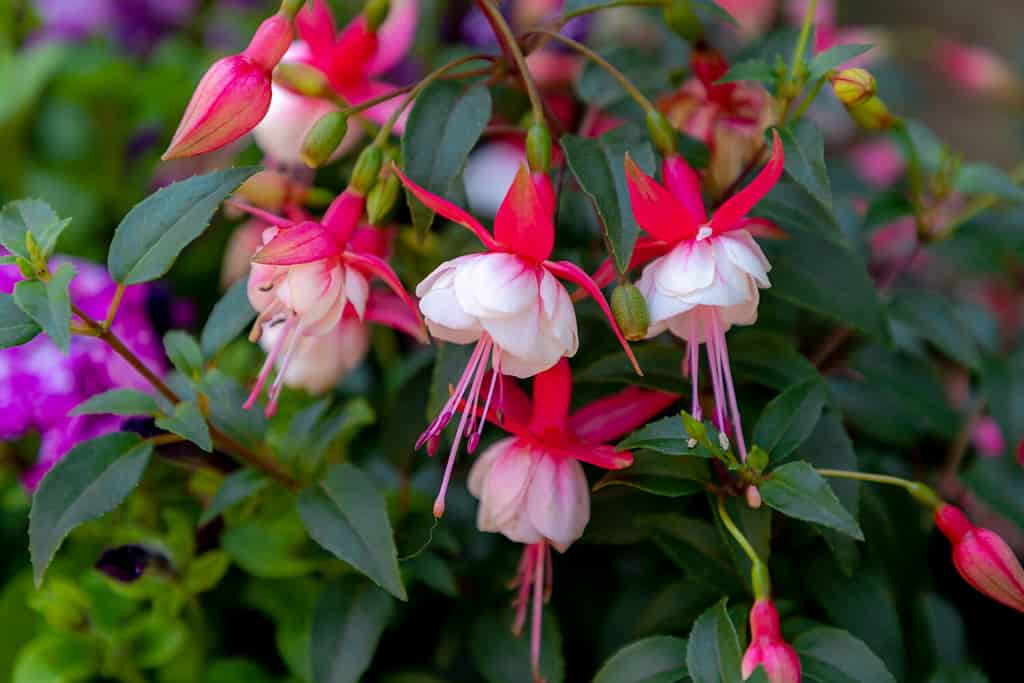
flowers look like dancers with dresses.
©Wut_Moppie/Shutterstock.com
The magnificent tropical plant Fuchsia is indigenous to the South American rainforests. It may be cultivated in the warmest climates in California, with stunning blossoms and evergreen leaves. They have a maximum height of two feet.
The flowers are available in bicolor variations and a variety of vivid colors, with the most common hues being vibrant reds, pinks, and purples. They bloom on occasion. Both seeds and cuttings from stems can be used to grow more Fuchsia flowers.
Damp soil is ideal for Fuchsia growth. They dislike having their roots become dehydrated and like high moisture levels. When arranged in a garden, these plants provide a striking impression.
Hummingbirds find them quite appealing and they also make wonderful flower arrangements.
7. Hummingbird Sage
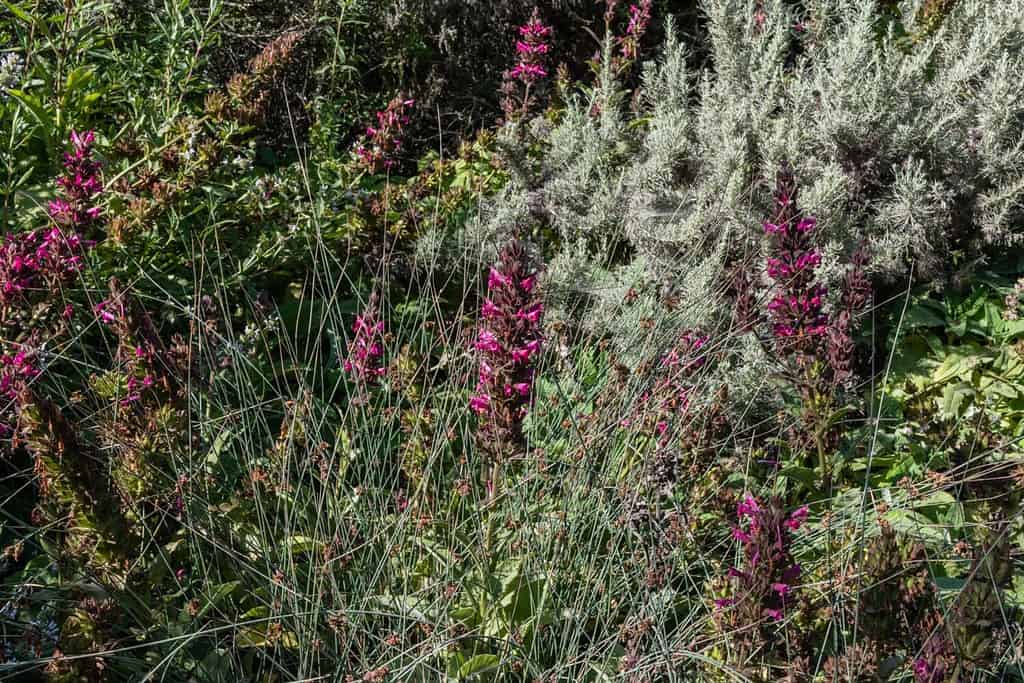
Hummingbird
sage is one of the most common flowers in California.
©Alex Krassel/Shutterstock.com
A breathtaking native wildflower prevalent near southern California’s coast is hummingbird sage. This doesn’t mean it can’t thrive in the northern portion of the Golden State! This perennial is adaptable, simple to grow, and will sprout quickly from seeds.
Hummingbird gardens, native gardens, or naturalized areas are good places for growing them. The purple-pink tubular blossoms lure hummingbirds. Few blooms in an arrangement burst open at a time, creating a prolonged blooming period.
This exquisite flower may reach a height of three feet. Hummingbird sage thrives in dry, well-shaded environments. You can see it has delicate, soft hairs covering its leaves and stems, giving the plant a slightly velvety texture.
8. Island Pink Yarrow
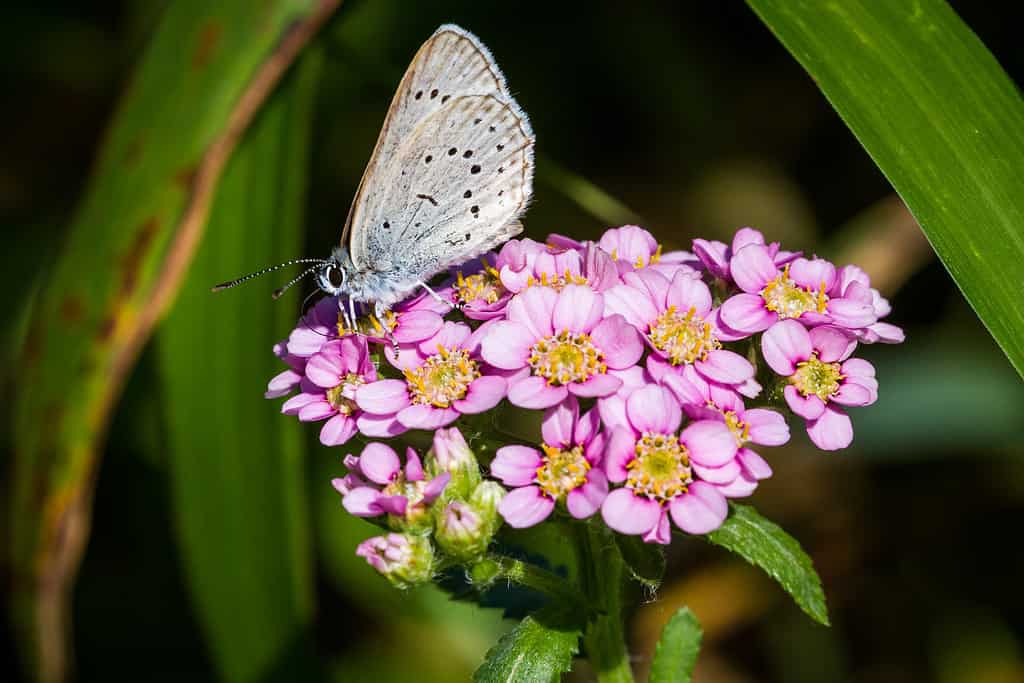
There are several types of yarrow blooms that come in a variety of colors.
©Biscut/iStock via Getty Images
A variety of yarrow with pink flowers is called “Island Pink.” These adorable yarrows are highly alluring to bees and other pollinators, much like similar yarrows. At the beginning of the year and the warmer months of summer, these flowers bloom.
Once the weather in Northern California slightly cools in the fall, the flower heads remain in place. They typically grow between six inches to one foot tall. Because yarrow is not finicky about the quality of its soil, the majority of gardeners can grow it with great ease.
Yarrow is an incredibly adaptable plant. It is suitable for almost any perennial garden, including ground cover, pollinator gardens, naturalized areas, and more.
9. Ladybells
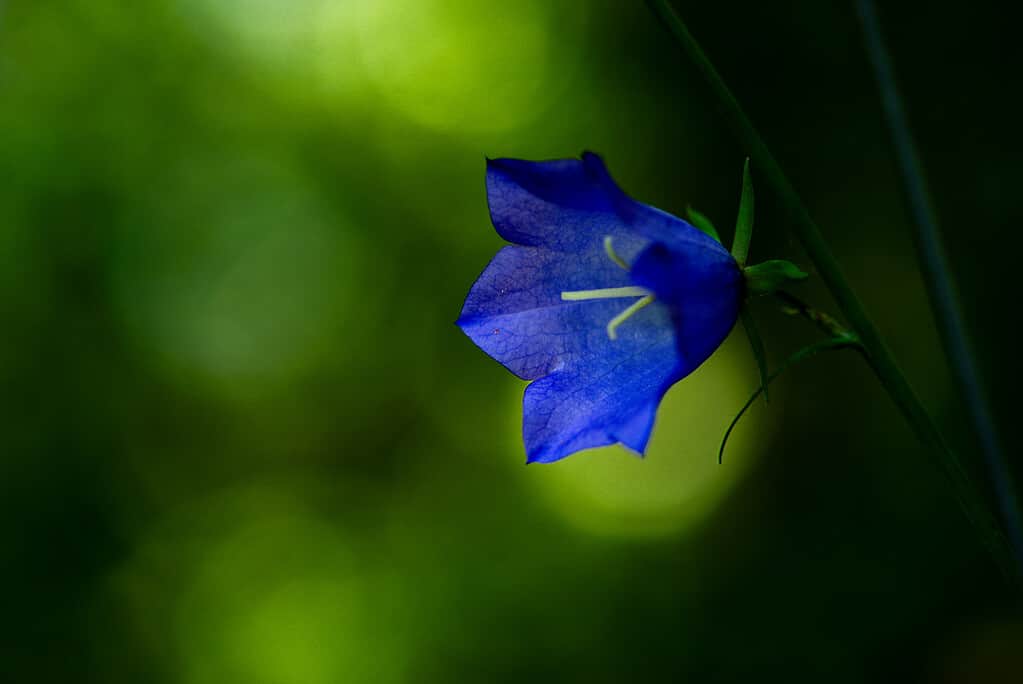
These blooms can come in just about any color.
©Ordasi Tatyjana/iStock via Getty Images
False campanula, or ladybells, are the real stars of any garden in need of a splash of color. Their stunning periwinkle blue hue and fragile bell-shaped pendulous blooms perfectly capture the allure and ease of a cottage-like garden arrangement.
The creeping bellflower and these blossoms have a striking resemblance in appearance. When grown in the proper climate with rich, moist soil, ladybelle plants are generally easy to maintain and enjoy long blooming seasons.
They work nicely not only in rustic garden environments but also in prairie, informal, and forest garden locations. They are an intriguing option for blooming along a wall or trellis. Partial to full sunlight is ideal for ladybells.
Morning sunlight is ideal. Provide the flowers with a little more water if they start to wilt as the temperatures rise throughout the day.
10. Lily of the Nile

Lily of the Nile flowers are popular along pathways.
©Svetlana Zhukova/Shutterstock.com
Our tenth option for flowers that thrive in Northern California is the stunning Lily of the Nile. The perennial Lily of the Nile has blue flowers and develops from a thick root. Every rhizome produces many shoots.
The damp or clay soils found in Northern California are ideal for this bloom. Prior to planting, improve clay soil with decomposed organic matter to help this beautiful flower thrive. Even though Lily of the Nile can withstand dryness, plants do not thrive when grown in sandy soil that is deficient in nutrients.
They typically have a darker middle line on each of the petals and bloom in hues of violet, pink, blue, and white from the beginning of summer until autumn. Tall stalks support blooming flowers, while long, broad leaves extend from the ground up.
Based on the cultivar, the foliage can be deep to pale green, gray-green, or blue-green in color and either evergreen or deciduous. Hummingbirds are drawn to these blooms, which also make beautiful cut flowers and are resistant to rabbits and deer
11. Winecup Clarkia
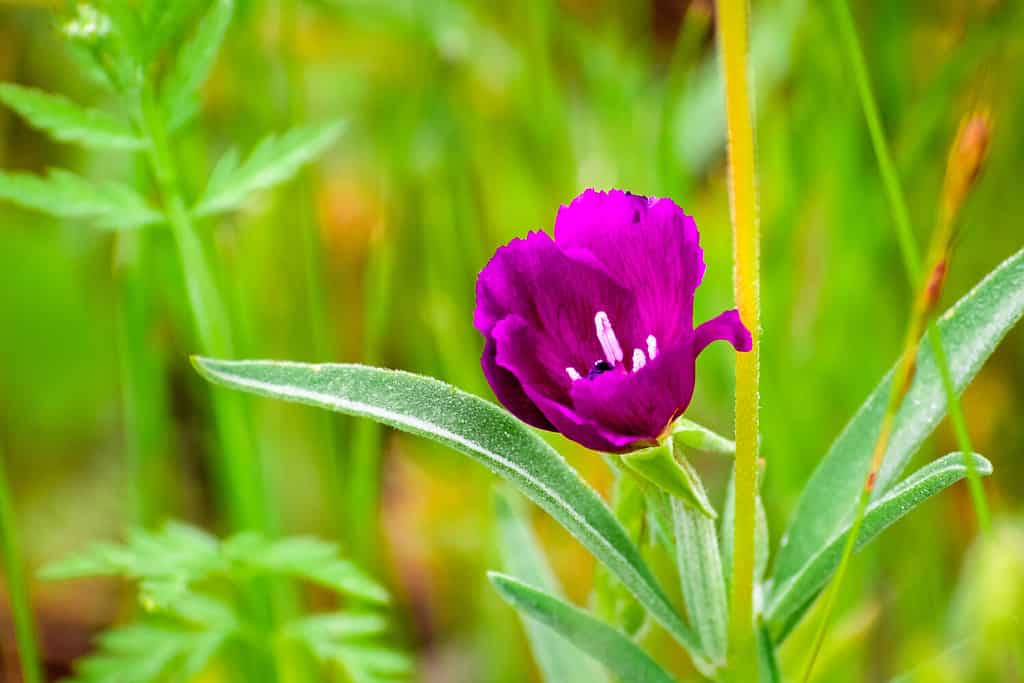
Winecup clarkia is also called wildcup fairfan.
©Sundry Photography/Shutterstock.com
One of the most popular flowers to plant in Northern California is the Winecup Clarkia. The pink-flowered native winecup Clarkia blossoms throughout spring. The colors of these flowers can be everything from pale pink to deep maroon.
The flower features a crimson stem with green foliage and four bowl-shaped petals. It is extremely common throughout California, appearing in the Central Valley, the Coast Ranges, and the foothills of the Sierra.
There exist three subspecies that exhibit variations in blossom color and crossover in their respective ranges. With a few lance-shaped foliage, this plant has a fragile, red stem that can reach a height of three feet.
Winecup clarkia prefers full sunlight with low-moisture soil.
12. Blue Gilia
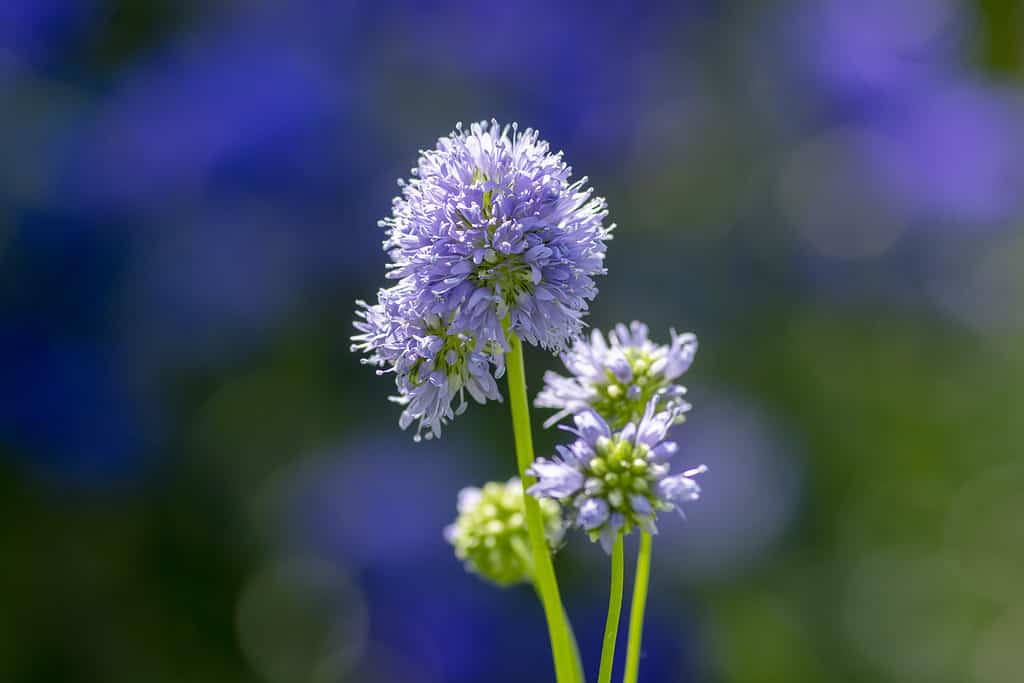
There are between 25 and 50 types of gilia flowers.
©Iva Vagnerova/iStock via Getty Images
Also known as the blue thimble flower, blue gilia is a hardy native to the majority of California. This plant grows into a lush, multi-branching annual that can reach heights of 15 inches and widths of 12 inches.
Blue gilia has heavy, ferny, nearly lacy, lush green leaves. By May, every plant starts to explode toward the sky with several glorious, vibrant blue flower stalks. These blossoms can last into July, long after numerous other spring wildflowers have faded.
It produces fragrant, lavender-blue flowers in cylindrical masses that stay in the air. Butterflies, bees, and other insects enjoy these blooms well into the summer!
13. California Poppy

Some locals call this bloom golden cup.
©Sumikophoto/Shutterstock.com
No list of flowers to grow in California is complete without the mention of the California poppy! After all, it is the state flower! Growing California poppies is easy, making it a great option for gardeners just starting out!
The germination of seeds occurs as the soil warms in springtime or following the first autumn downpours. In regions with scorching summers, poppies flower in the spring and early summer months before their tips wither and they go dormant in the sweltering heat.
California poppies have a long summertime blooming season. The ideal soil is sandy, well-drained, with plenty of sunlight. Unless the growth season is extremely dry, no extra watering is needed.
These poppies will live for several years in areas with moderate winters, reblooming every autumn. The poppies act like annuals in areas with cold winters, growing again from seed every year. The California poppy’s blossoms close in the evening and on overcast days.
Summary of the Best Flowers to Plant in Northern California
| Rank | Flower |
|---|---|
| 1 | Anise Hyssop |
| 2 | Bear’s Breeches |
| 3 | Bird of Paradise |
| 4 | Blue Passion Flower |
| 5 | Delphinium |
| 6 | Fuchsia |
| 7 | Hummingbird Sage |
| 8 | Island Pink Yarrow |
| 9 | Ladybells |
| 10 | Lily of the Nile |
| 11 | Winecup Clarkia |
| 12 | Blue Gilia |
| 13 | California Poppy |
The photo featured at the top of this post is © Kit Leong/Shutterstock.com
Thank you for reading! Have some feedback for us? Contact the AZ Animals editorial team.







